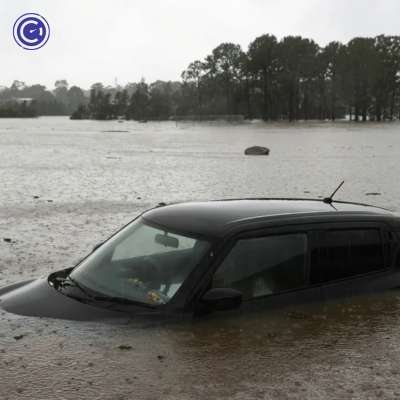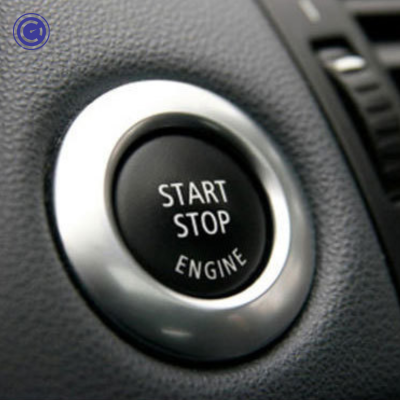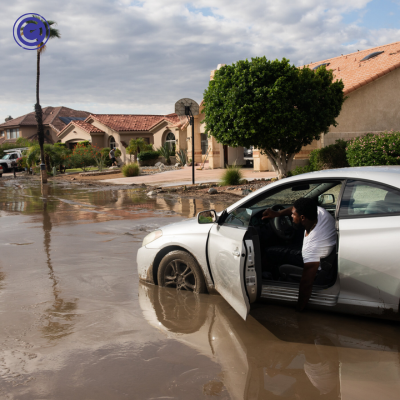Imagine this: you’re driving along, and suddenly, you find yourself in the middle of an unexpected flood. Water surrounds your car, panic sets in. What do you do? Floods can be terrifying, but knowing how to react when your car is stuck in water is crucial for your safety and the well-being of your vehicle.
Table of Contents
When Your Car Encounters Water

Assess the Situation
When you find your car stuck in water, the initial moments are crucial for assessing the situation accurately. This assessment is vital in determining the next steps for ensuring your safety and minimizing potential damage to your vehicle.
Understand the Source
- Flash Flood or Overflowing River: Recognize whether the water is from a flash flood, which often occurs rapidly and without warning, or from an overflowing river, which may rise more gradually. Flash floods are particularly dangerous due to their sudden nature and the force of the moving water.
- Urban Flooding: In urban areas, waterlogging can result from heavy rain overwhelming the drainage system. Although usually less violent than flash floods, urban floods can still pose serious risks.
- Weather Conditions: Stay aware of the current weather conditions and forecasts. If heavy rains are predicted or occurring, the likelihood of water levels rising rapidly is higher, indicating a more urgent need for action.
Gauge the Depth
- Visual Clues: Look for landmarks or objects partially submerged, such as road signs, fences, or parked cars. These can give you an idea of the water depth.
- Water Level on Your Car: Observe how high the water is reaching on your vehicle. If water is at the level of the tires or higher, it’s risky to stay in the car.
- Rising Water: Be vigilant about whether the water level is steady or rising. If you see the water level increasing, it’s a clear sign to evacuate the vehicle immediately and move to higher ground. Rising water can quickly turn a bad situation into a life-threatening one.
- Current and Flow: Notice the flow of the water. If there’s a strong current, the risk is higher, as moving water can exert significant force against your vehicle, potentially sweeping it away.
In summary, quickly and accurately assessing the source and depth of the water is critical in a flooding situation. This initial assessment will guide your immediate actions, whether to stay put and call for help or to safely evacuate the vehicle and move to higher ground. Remember, no matter the depth or source, the utmost priority should always be your personal safety.
Safety First
When faced with a situation where your car is stuck in water, prioritizing safety above all else is crucial. Here are the immediate steps you should take:
Turn Off the Engine

- Prevent Engine Damage: If your car is submerged or partially submerged in water, the first action should be to turn off the engine. This is crucial because running the engine can cause more water to be sucked into critical components, leading to significant and potentially irreparable damage.
- Avoid Electrical System Short Circuits: With modern cars heavily relying on electrical systems, turning off the engine can prevent short circuits. Water and electricity are a dangerous mix, and a short circuit could lead to further complications, including potential fire hazards.
Evacuate

- Assess the Safety of Exiting: Before opening the door, look around to ensure it’s safe to exit the vehicle. If the water outside is flowing rapidly or the level is high, exiting the car might be risky. In such cases, it might be safer to stay in the vehicle and call for help.
- Move to Higher Ground: If it’s safe to leave the car, do so immediately and move to higher ground. Floodwaters can rise unpredictably and quickly, so it’s essential to distance yourself from the vehicle and the flooded area as soon as possible.
- Be Aware of Water Currents: Even shallow water can exert a strong force. When wading through floodwaters, be cautious of the water’s current. Move slowly and steadily to maintain your balance and prevent being swept away.
- Seek Immediate Shelter: Once you’ve reached a safe area, seek shelter and warmth, especially if you’re wet. This helps prevent hypothermia, a real risk in wet and potentially cold conditions.
Remember, vehicles can be repaired or replaced; lives cannot. The priority in any flooding situation should always be personal safety. By turning off your engine to protect the car’s integrity and evacuating to ensure your own safety, you are taking the most critical steps in navigating this challenging situation.
Call for Help
Contact Emergency Services

- Immediate Danger: If you feel that you’re in any immediate danger, don’t hesitate to call emergency services. This is especially important if the water is rising quickly, if there are strong currents, or if you are unable to reach a safe location on your own.
- Provide Accurate Information: When you contact emergency services, provide them with clear information about your location, the condition of your surroundings, and any immediate risks or injuries. This will help them respond more effectively.
- Follow Instructions: Emergency responders are trained to handle such situations. Follow their instructions carefully to ensure your safety and the safety of others.
Reach Out to Roadside Assistance
- Vehicle Recovery: If you are in a safe location but your vehicle is still stuck, contact your roadside assistance service provider. They have the tools and expertise to recover your vehicle safely.
- Explain the Situation: Describe the condition of your vehicle and its location accurately. Let them know if it’s submerged or if the water is receding. This information will help them prepare the right equipment for vehicle recovery.
- Wait for Professional Help: Once you’ve called roadside assistance, wait for them to arrive. Attempting to recover the vehicle yourself can be dangerous and may cause further damage to the car.
Stay Connected
- Keep Communication Lines Open: Stay on the line with emergency services or roadside assistance as long as necessary. They may be able to provide valuable guidance and reassurance while you wait for help to arrive.
- Use Technology Wisely: If you’re unable to make a call due to poor signal, try sending a text message or using your phone’s emergency SOS feature. Some vehicles equipped with telematics systems also offer emergency assistance features.
In conclusion, knowing when and how to call for help can make a significant difference in your safety and the safety of your vehicle during a flood. Emergency services can provide immediate assistance in life-threatening situations, while roadside assistance can help with vehicle recovery once you are safe. Don’t underestimate the urgency of the situation; reach out for help at the earliest sign of trouble.
Do’s When Your Car is Stuck in Water
Finding your car stuck in water can be a stressful and potentially dangerous situation. Here are some crucial “Do’s” to remember that can help mitigate the risks and protect both you and your vehicle:
Avoid Driving Through Water
- Risks of Water Damage: Even water that appears shallow can be deeper than it looks and can cause serious damage to your vehicle, including engine hydrolock, electrical system failures, and interior flooding.
- Hidden Road Hazards: Submerged water can hide road imperfections, debris, or even major road damage that can be hazardous to drive through.
Keep Doors Closed
- Prevent Water Entry: Keeping your doors closed helps to prevent more water from entering your car, which can be critical in protecting the interior and the electrical systems, including the power windows and door locks.
- Maintain Vehicle Buoyancy: In some cases, keeping the car sealed can provide temporary buoyancy, giving you more time to assess the situation and call for help.
Stay Calm
- Clear Decision-Making: Panic can lead to poor decision-making. Staying calm allows you to assess your situation more rationally and make safer choices.
- Managing Stress: Take deep breaths and focus on your immediate safety. Remember that staying calm not only helps you but can also calm any passengers in the car.
Document for Insurance
- Evidence for Claims: If it is safe to do so, take pictures or videos of your car and the surrounding area. This documentation can be invaluable when filing an insurance claim.
- Record the Extent of Damage: Capture different angles showing the water level, any visible damage to your car, and the overall situation. This evidence can support your description of the incident to the insurance company.
By following these do’s when your car is stuck in water, you can protect yourself, minimize potential damage to your vehicle, and prepare for any necessary insurance claims. The key is to prioritize safety, think clearly, and take proactive steps to address the situation. Remember, cars can be repaired or replaced; your safety is irreplaceable.
Don’t When Your Car is Stuck in Water
When faced with a situation where your car is stuck in water, there are certain actions you should avoid to ensure your safety and prevent further damage to your vehicle. Here are some critical “Don’ts” to remember:
Don’t Ignore Warning Signs
- Respect Road Closures: Never drive around barriers or ignore road closure signs. These are placed for your safety, often due to flooding or unsafe road conditions ahead.
- Avoid Flooded Areas: If you see a flooded roadway, do not attempt to cross it. It’s often impossible to determine the depth of the water or the condition of the road underneath.
Don’t Underestimate the Power of Water
- Strong Currents: Even a small amount of moving water can exert enough force to move a vehicle, including large cars or SUVs.
- Hidden Dangers: Moving water can also erode roadways, creating hidden sinkholes or debris that can trap or damage your vehicle.
Don’t Try to Restart the Engine
- Risk of Engine Damage: Attempting to restart the engine while your car is in water can cause water to be sucked into the engine, leading to a hydrolock, which can severely damage the engine.
- Wait for Professional Assessment: If your car has been in the water, it’s best to have it inspected by a professional before attempting to start it again.
Don’t Delay Evacuation for a Tow Truck
- Personal Safety is Paramount: If water is rising or your safety is at risk, evacuate the vehicle immediately. Your safety and the safety of any passengers always come first.
- Call for Help After Evacuating: Once you are in a safe location, then call for a tow truck or roadside assistance. Remember, vehicles can be salvaged, but lives cannot be replaced.
By avoiding these actions, you can significantly reduce the risks associated with a car being stuck in water. Always prioritize personal safety and seek professional assistance in such scenarios. Remember, being prepared and informed can make all the difference in handling these challenging situations effectively.
Conclusion
Being caught in a flood can be daunting, but knowing how to respond makes all the difference. Remember, your safety and the safety of your passengers is the top priority. Being aware of the dos and don’ts, and having an action plan can help mitigate risks and damage.

